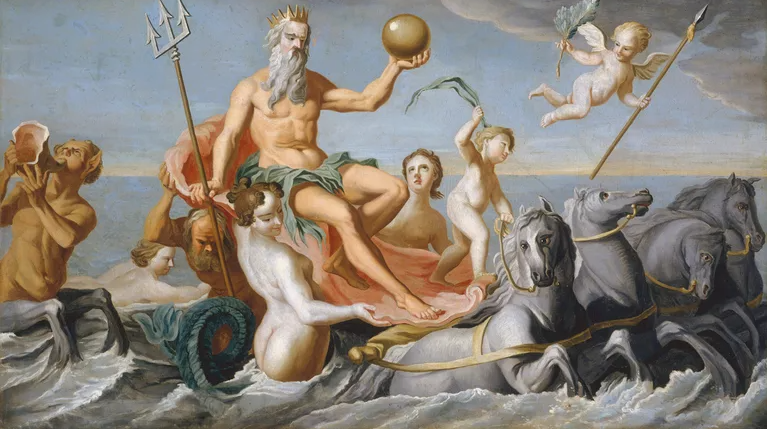
1. The masculine elements are waypoints along the Great Masculine Axis.
2. These elements reflect different frequencies.
3. There are an infinite number of ways of dividing the Great Masculine Axis into elements. Some of these configurations make more sense than others. The most popular are the twofold, fourfold and sevenfold divisions.
4. The sevenfold division of the Great Masculine Axis is represented by the Mithraic Ladder, which depicts how lead ascends to tin, how tin ascends to iron, how iron ascends to copper, how copper ascends to silver, how silver ascends to mercury and how mercury ascends to gold.
5. The first element, at the lowermost point of the Great Masculine Axis, is lead, immortalised as Cronus. The frequency of this element is saturnine.
6. Alchemical lead is soft, dull and grey. It represents the lowest possible frequency and the reality that life is fundamentally a battle for survival against the natural world.
7. The second element, immediately above lead on the Great Masculine Axis, is tin, immortalised as Zeus. The frequency of this element is jovial.
8. Lead ascends to tin by becoming brighter. This reflects that winning the battle for survival against the natural world is inherently pleasurable.
9. Alchemical tin is soft, bright and grey. It represents a very low frequency and the will to simple pleasure and entertainment.
10. The third element, immediately above tin on the Great Masculine Axis, is iron, immortalised as Ares. The frequency of this element is martial.
11. Tin ascends to iron by becoming harder. This reflects that anyone who overcomes the natural world must then clash with those others who overcame the natural world.
12. Alchemical iron is hard, dull and blue. It represents a low frequency and the will to dominate physically.
13. The fourth element, immediately above iron on the Great Masculine Axis, is copper, immortalised as Aphrodite. The frequency of this element is capricious.
14. Iron ascends to copper by becoming colourful. This reflects that the purpose of physical domination is to attract women.
15. Alchemical copper is hard, bright and red. It represents a moderate frequency and the will to romance and to make love.
16. The fifth element, immediately above copper on the Great Masculine Axis, is silver, immortalised as Artemis. The frequency of this element is brilliant.
17. Copper ascends to silver by becoming brighter. This reflects that knowledge brings order to the material world.
18. Alchemical silver is hard, bright and white. It represents a high frequency and the will to dominate intellectually.
19. The sixth element, immediately above silver on the Great Masculine Axis, is mercury, immortalised as Hermes and Athena. The frequency of this element is mercurial.
20. Silver ascends to mercury by quickening. This represents how true intelligence readily perceives the divine behind all things, and, by doing so, apotheosises.
21. Alchemical mercury is liquid, bright and grey. It represents a very high frequency and the will to exult oneself.
22. The seventh element, at the uppermost point of the Great Masculine Axis and immediately above mercury, is gold, immortalised as Apollo. The frequency of this element is radiant.
23. Mercury ascends to gold by becoming radiant. This represents how knowledge of the divine, and the will to know the divine, are the greatest of all goods.
24. Alchemical gold is soft, bright and yellow. It represents the highest frequency of all and the will of the divine.
25. Apotheosis is a matter of transforming the lead of one’s station of birth into the gold of unity with the will of the divine. This requires passing through all of the masculine elements, in turn.
26. The will to apotheosise is the most popular of all the Minor Aspirations.
*
This chapter is an excerpt from Elemental Elementalism, the foundational scripture of the new religion of the Age of Aquarius.
*
If you enjoyed reading this essay/article, you can get a compilation of the Best VJMP Essays and Articles of 2020 from Amazon for Kindle or Amazon for CreateSpace (for international readers), or TradeMe (for Kiwis). A compilation of the Best VJMP Essays and Articles of 2019, the Best VJMP Essays and Articles of 2018 and the Best VJMP Essays and Articles of 2017 are also available.
*
If you would like to support our work in other ways, please consider subscribing to our SubscribeStar fund. Even better, buy any one of our books!
